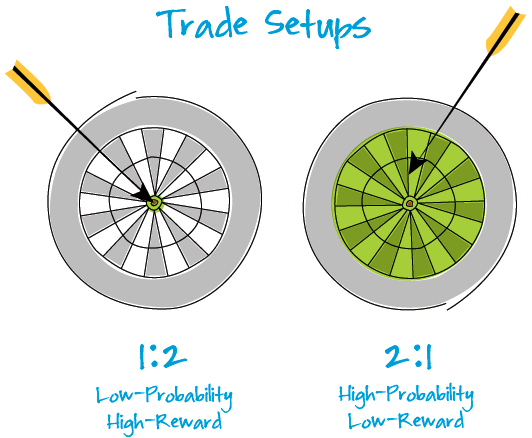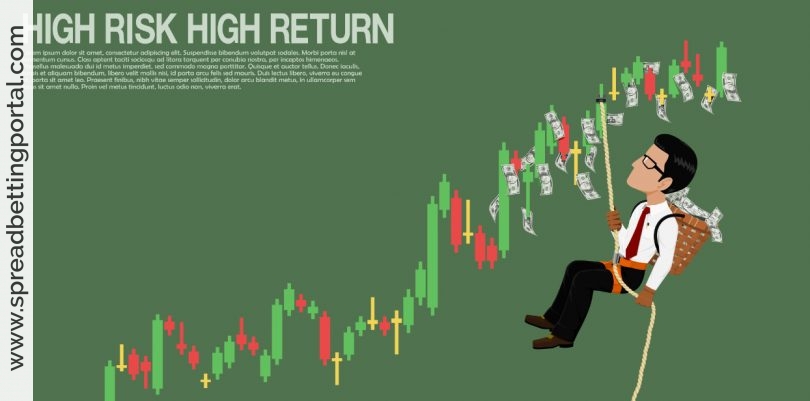With trading being a serious undertaking, one which you will no doubt have put a fair amount of time and thought into, it makes sense, therefore, that you want your capital and trading lifetime to be as long and as profitable as possible. Although classic trading rules state that you should make your profit targets at least twice as large as your stops, markets rarely cooperate with traders’ best laid plans.
Flexibility is essential to achieve success. When dealing with risk/reward ratios, spread traders need to understand that they can either trade high-probability/low-reward setups or low-probability/high-reward ideas. In short, as a trader you must either be satisfied with frequent but small profits and occasional large losses or frequent but relatively small losses punctuated by an occasional large profit. Although in an ideal world, most traders would love to incur only small infrequent losses and garner vast consistent profits, such generous outcomes rarely occur in the currency markets.
The choice of which risk/reward method to follow, depends on your personal preference and psychological profile. For example, if you choose to follow a high-probability strategy, your risk reward parameters would have to be inverted to a 1:2 ratio where you would risk 100 points to make 50. For such a strategy to work, you must be accurate eight out 10 times – no small feat in any market.
On the other hand, the traditional 2:1 reward to risk ratio allows the trader to be wrong as much six out of 10 times and still be profitable. Such odds seem very attractive but can be quite challenging in real life.
Imagine a scenario where you place a 50 point stop and 100 point target. The currency pair moves in your direction 99 points but never hits your target and then promptly reverses and hits your stop. The mathematical loss from such price action would actually be equal to -149 points while the psychological pain is immeasurable. That’s why many traders prefer to use the scale out method, often setting a short profit target on part of the position and then use a trailing stop for the rest of the position once the initial profit is banked.
Although this method is mathematically inferior to the 2:1 risk reward ratio, it is often more psychologically palatable to traders. By allowing at least some profit to be recognised early and then moving the rest of the position to break even, traders are better able to withstand the vicissitudes of short-term price action, while remaining at least in a part of the trade for a possible large profit run.



Leave a Comment